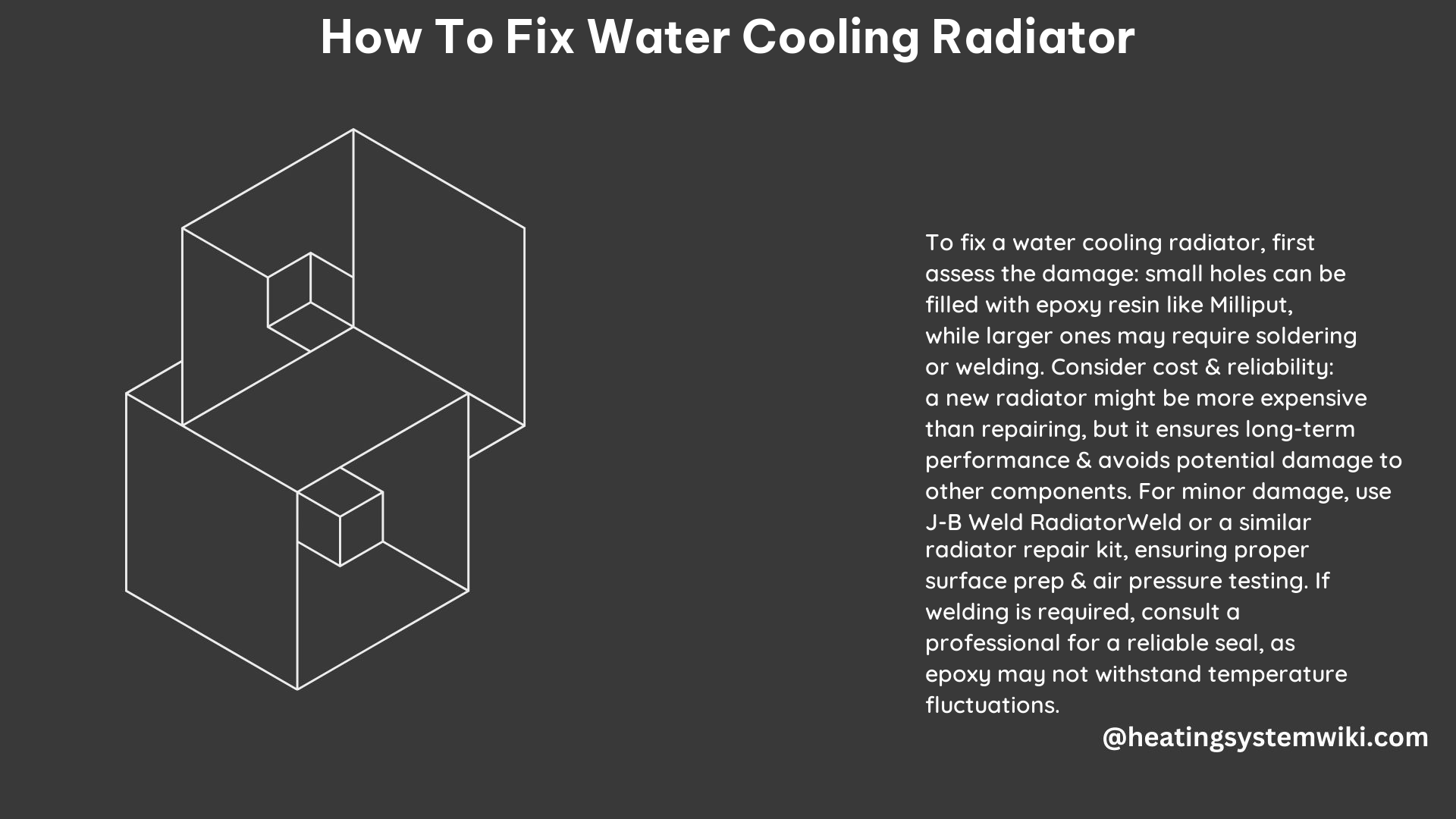Fixing a water cooling radiator can be a complex task, but with the right tools and techniques, it’s possible to get your system back up and running. In this comprehensive guide, we’ll cover the various steps you can take to diagnose and repair common issues with your water cooling radiator.
Identifying the Issue
The first step in fixing a water cooling radiator is to identify the underlying problem. Common issues include:
- Leaks: Radiators can develop small holes or cracks that cause leaks. These leaks can be caused by corrosion, physical damage, or manufacturing defects.
- Seized Water Pump: If the water pump in your cooling system becomes seized, it can prevent the coolant from circulating properly, leading to overheating.
- Coolant Buildup: Certain types of coolant, such as pastel coolants, can cause buildup and clogging in the radiator and pump, leading to performance issues.
Repairing Leaks

If your radiator has a small leak, you may be able to fix it using an epoxy resin like Milliput. This method is effective for holes no larger than a pea. Here’s how to do it:
- Thoroughly clean the area around the leak with isopropyl alcohol to remove any dirt or debris.
- Mix the epoxy resin according to the manufacturer’s instructions, ensuring a smooth, consistent consistency.
- Apply the epoxy resin to the leak, using a small tool or toothpick to spread it evenly and fill the hole.
- Allow the epoxy to cure for the recommended time, typically 24-48 hours.
- Once cured, test the radiator for any remaining leaks by pressurizing the system.
If the leak is too large or the radiator is damaged internally, it may be more practical to replace the radiator entirely. Replacement radiators can be found from various manufacturers and should be compatible with your existing water cooling setup.
Fixing a Seized Water Pump
If your water pump has seized, you may be able to get it working again by cleaning it out and refilling the system. Here’s how:
- Disconnect the water pump from the system and remove any debris or buildup from the impeller and housing.
- Thoroughly clean the pump using a mild detergent and warm water, ensuring all surfaces are free of any contaminants.
- Refill the pump with fresh, distilled water, making sure it is fully submerged.
- Reconnect the pump to the system and power it on, checking for proper operation.
If the pump remains seized or is not functioning correctly, you may need to replace the pump entirely. When selecting a replacement, ensure it is compatible with your water cooling setup and can provide the necessary flow rate and pressure.
Preventing Coolant Buildup
To prevent coolant buildup and clogging in your water cooling system, it’s important to use the right type of coolant and maintain the system regularly. Here are some tips:
- Use High-Quality Coolant: Avoid using pastel or other coolants that are prone to forming deposits. Instead, opt for a high-quality, clear coolant specifically designed for water cooling systems.
- Flush the System Regularly: Periodically flush your water cooling system to remove any accumulated debris or buildup. Refer to the manufacturer’s recommendations for the appropriate flushing schedule.
- Monitor Coolant Levels: Regularly check the coolant level in your system and top it up as needed to ensure proper circulation and cooling performance.
Soldering Copper Components
When working with copper components in your water cooling system, it’s important to use the right tools and techniques to avoid potential issues. Here are some tips for soldering copper:
- Use a Low-Flame Torch: Avoid using a high-intensity torch, as this can damage the copper components. Instead, use a low-flame torch to gently heat the surfaces you’re soldering.
- Avoid Lead/Tin Solder: Lead/tin solder can cause galvanic corrosion in water cooling systems. Use a lead-free solder, such as a silver-based solder, to minimize the risk of corrosion.
- Pressure Test the System: After making any repairs or modifications, it’s crucial to pressure test the entire water cooling system to ensure there are no leaks before reinstalling it in your case.
By following these steps and using the right tools and materials, you can effectively diagnose and repair issues with your water cooling radiator, ensuring your system continues to perform at its best.
Reference:
- How to Fix a Leaking Water Cooling Radiator: https://www.youtube.com/watch?v=-bMhyrN4ZVc
- How to Fix a Seized Water Pump: https://www.youtube.com/watch?v=Y16aFUWAqVg
- How to Solder Copper in a Water Cooling System: https://www.reddit.com/r/watercooling/comments/114t0ra/any_idea_how_to_fix_this_radiator/
